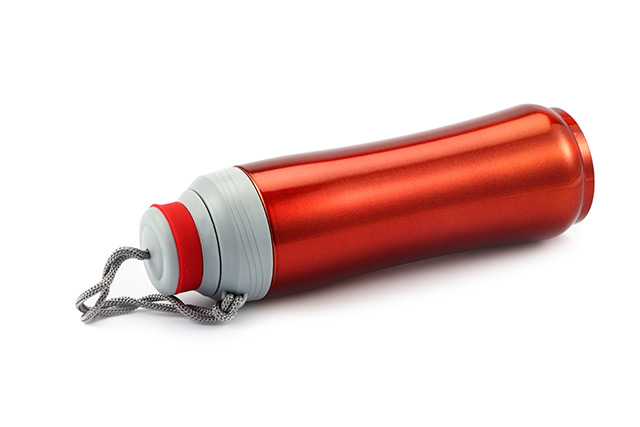
In a outdoor survival scenario, the difference between life and death can be decided by something as seemingly mundane as the presence or absence of insulating walls inside your water canteen. An article in Modern Survival Blog recommends getting stainless steel canteens that have only one wall and no insulation whatsoever because of their greater versatility.
A canteen is a vital part of any survival gear. While it is possible to build a water container from naturally available materials, most preppers will simply purchase several inexpensive canteens and distribute them between supply stashes.
Practically all lists about survival tools will include a water canteen as a must-have. Most of them will go the extra step in detail and recommend insulated, double-walled stainless steel canteens.
The basic design dates back to the Thermos bottle of 1906. What appears to be a single container is actually made up of two water vessels. The smaller vessel is sealed within the bigger one. The two containers are physically separated by an insulating material to prevent the movement of heat between them.
Foam was commonly used as insulation to keep the liquid hot. Vacuum insulation worked for both hot and cold contents. There are other means of insulation, but these are the most common. (Related: Improvising while prepping: Everyday items that can double duty in an emergency.)
The many uses of stainless steel water containers
Stainless steel containers have many benefits over their counterparts. They are more eco-friendly than plastic bottles because they do not incorporate toxic chemicals that could contaminate drinking water. Their alloy material is also highly resistant to rust, which would also render water dangerous to drink.
Metal containers are also much sturdier. They can withstand strong impacts that would shatter ceramics, so they will survive getting dropped. They can also handle very high temperatures that would melt plastics.
The latter leads to one of the most important uses of a stainless steel container. A canteen could be filled with collected water and either suspended over a fire or placed in the midst of coals.
The heated water will eventually come to boil. The boiling process kills potentially harmful microbes and purifies the water, which can now be consumed without worry. The same process can be used to turn crushed ice into liquid water and then purify the melted ice.
Insulated, double-walled canteens can't be used as boiling water vessels
Here lies the problem. Insulated, double-walled canteens are not suitable for water purification. Their very design and construction prevents them from being used as boiling water vessels.
The insulating material between the inner and outer vessels prevents the movement of heat between them. So cold liquids in an insulated canteen will stay cold even in torrid environments, while hot liquids will maintain their heat for long periods of time in cold environments.
The insulation of a double-walled canteen means heat from outside sources will not reach the liquid stored inside an insulated container. Without that heat, the water will never be brought to boil. Given the limited fuel and even time one has in a survival situation, the inability to quickly purify water would be deadly.
Preppers and survivalists would therefore be served best by getting a non-insulated, single-walled canteen that can be used to boil water much more efficiently.
Another way to approach this matter is to bring a separate container that can hold other material aside from liquids. For example, a container that can hold food for cooking could also hold enough water for boiling. This will take up more space and weight, though.
Find out other means of using your water canteen to keep yourself alive in a survival scenario at Survival.news.
Sources include:
Please contact us for more information.















